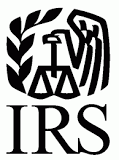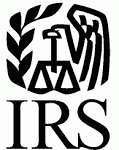IRS announced today that it is extending the due dates for the 2015 information reporting requirements under sections 6055 and 6056 of the Code. Specifically, Notice 2016-4 extends the due date:
(1) for furnishing to individuals the 2015 Form 1095-B, Health Coverage, and the 2015 Form 1095-C, Employer Provided Health Insurance Offer and Coverage, from February 1, 2016, to March 31, 2016, and
(2) for filing with the Service the 2015 Form 1094-B, Transmittal of Health Coverage Information Returns, the 2015 Form 1095-B, Health Coverage, the 2015 Form 1094-C, Transmittal of Employer-Provided Health Insurance Offer and Coverage Information Returns, and the 2015 Form 1095-C, Employer-Provided Health Insurance Offer and Coverage, from February 29, 2016, to May 31, 2016, if not filing electronically, and from March 31, 2016, to June 30, 2016 if filing electronically.
The extensions of due dates provided by Notice 2016-4 apply only to section 6055 and section 6056 information returns and statements for calendar year 2015 filed and furnished in 2016 and do not require the submission of any request or other documentation to the IRS.
BACKGROUND
Section 6055 requires health insurance issuers, self-insuring employers, government agencies, and other providers of minimum essential coverage to file and furnish annual information returns and statements regarding coverage provided. Section 6056 requires applicable large employers (generally those with 50 or more full-time employees, including full-time equivalents, in the previous year) to file and furnish annual information returns and statements relating to the health insurance that the employer offers (or does not offer) to its full-time employees.
Section 6721 of the Code imposes a penalty for failing to timely file an information return or filing an incorrect or incomplete information return. Section 6722 of the Code imposes a penalty for failing to timely furnish an information statement or furnishing an incorrect or incomplete information statement. Section 6721 and 6722 penalties are imposed with regard to information returns and statements listed in section 6724(d) of the Code, and section 6724(d) lists the information returns and statements required by sections 6055 and 6056.
Final regulations, published on March 10, 2014, relating to the reporting requirements under sections 6055 and 6056, specify the deadlines for information reporting required by those sections. See our prior posts here and here.
The regulations under section 6055 provide that every person that provides minimum essential coverage to an individual during a calendar year must file with the Service an information return and a transmittal on or before the following February 28 (March 31 if filed electronically) and must furnish to the responsible individual identified on the return a written statement on or before January 31 following that calendar year. The Service has designated Form 1094-B and Form 1095-B to meet the requirements of the section 6055 regulations.
The regulations under section 6056 require every applicable large employer or a member of an aggregated group that is determined to be an applicable large employer (ALE member) to file with the Service an information return and a transmittal on or before February 28 (March 31 if filed electronically) of the year following the calendar year to which it relates and to furnish to full-time employees a written statement on or before January 31 following that calendar year. The Service has designated Form 1094-C and Form 1095-C to meet the requirements of the section 6056 regulations.
The preambles to the section 6055 and section 6056 regulations provide that, for 2015 coverage, the Service will not impose penalties under section 6721 and section 6722 on reporting entities that can show that they have made good faith efforts to comply with the information reporting requirements, and that this relief applies only to furnishing and filing incorrect or incomplete information, including TINs or dates of birth, reported on a return or statement and not to a failure to timely furnish or file a statement or return. Notice 2015-87 reiterates that relief, and Notice 2015-68, provides additional information about that relief with regard to reporting under section 6055. The preambles also note, however, the general rule that, under section 6724 and the related regulations, the section 6721 and section 6722 penalties may be waived if a failure to timely furnish or file a statement or return is due to reasonable cause, that is, the reporting entity demonstrates that it acted in a responsible manner and the failure is due to significant mitigating factors or events beyond the reporting entity’s control.
PENALTIES
Employers or other coverage providers that do not comply with the extended due dates provided by Notice 2016-4 are subject to penalties under section 6722 or 6721 for failure to timely furnish and file. However, the Service is encouraging employers and other coverage providers that do not meet the extended due dates to furnish and file, and the Service will take such furnishing and filing into consideration when determining whether to abate penalties for reasonable cause. The Service will also take into account whether an employer or other coverage provider made reasonable efforts to prepare for reporting the required information to the Service and furnishing it to employees and covered individuals, such as gathering and transmitting the necessary data to an agent to prepare the data for submission to the Service, or testing its ability to transmit information to the Service. In addition, the Service will take into account the extent to which the employer or other coverage provider is taking steps to ensure that it is able to comply with the reporting requirements for 2016.
Notice 2016-4



